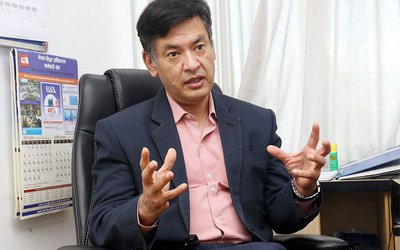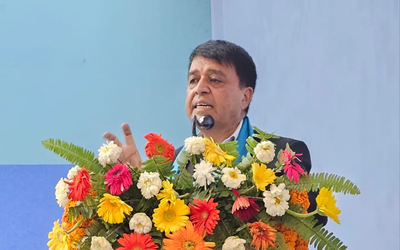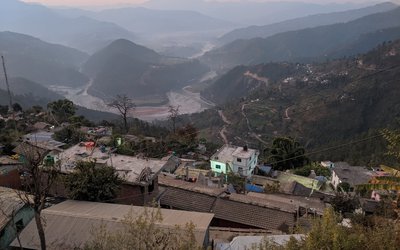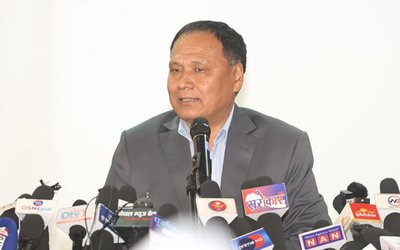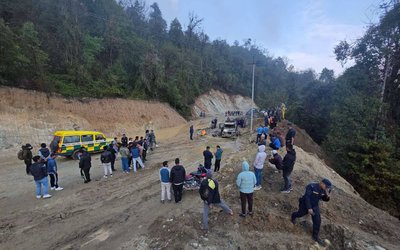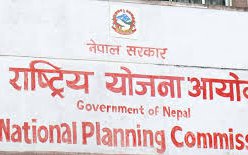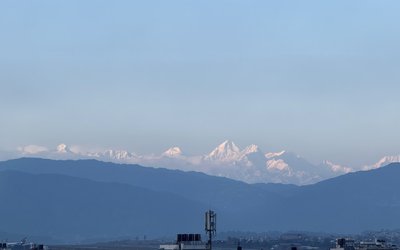
Despite the COVID-19 pandemic and disruptions caused by the nationwide and local lockdowns, Nepal has made progress in the second quarter of the fiscal year, increasing production and capital investment.
This has contributed a lot to the economy of the country. With his confidence, Finance Minister Bishnu Pouel had announced a month ago that Nepal’s economy was coming back on track.
However, the recent surge of COVID-19 cases and local level lockdowns in different parts of the country, including Kathmandu Valley, is likely to make adverse effects on the economy.
Nepal’s gross domestic product (GDP) is anticipated to grow by 3.1% in fiscal year (FY) 2021 from a contraction of 1.9% in FY2020, says the Asian Development Outlook (ADO) 2021, the flagship economic publication of the Asian Development Bank (ADB).
Growth is expected to recover from the low base in FY2020, as a result of the gradual lifting of nationwide lockdown since July 2020, and a pickup in domestic demand. The ongoing vaccination campaigns against the coronavirus disease (COVID-19) pandemic will help strengthen the economic impetus.
“The COVID-19 contagion that seemed to have tapered off until end-March 2021 is now spreading rapidly. If strict containment measures that have been initiated to tackle this second wave of infections are necessary for a prolonged period in the remainder of this fiscal year, then GDP growth will be lower than the forecast,” said ADB Officer-in-Charge for Nepal Sharad Bhandari.
Agriculture is expected to rise by 2.4% in FY2021 as paddy yield is likely to increase by 1.3%, owing to a good monsoon and increased acreage under production. Manufacturing and service industries gradually reopened following the end of the lockdown in July 2020. The affected industries, including micro, small, and medium-sized enterprises (MSMEs) have been receiving economic support in the form of concessional lending and refinancing of existing loans to mitigate the adverse effects of the downturn.
Construction began to pick up, while the completion of some major projects of the government is expected to boost economic recovery. The Upper Tamakoshi Hydropower is expected to begin its first phase of production, while water from the Melamchi Water Supply Project began flowing in March 2021. Overall, industry is expected to grow by 2.5% after contracting by 4.2% in FY2020. The services sector is expected to grow by 3.4% in FY2021, though hospitality, travel, and tourism subsectors will take a longer time to recover.

The ADO 2021 forecasts inflation to moderate to an average of 5.0% in FY2021, down from 6.2% in FY2020, on the back of a good harvest, smoother supply chains, and subdued non-food prices. The current account deficit is expected to widen from 0.9% of GDP in FY2020 to 2.5% in FY2021, owing to increased import growth.
GDP growth of 5.1% is envisaged for FY2022 in anticipation of vaccination progress against COVID-19, regional and global economic recovery from this pandemic, assumption of a good monsoon leading to better harvest, and steady inflows of workers’ remittance. Inflation is forecast to remain contained at an average of 6.0% in FY2022, assuming a better harvest, subdued oil prices and modest uptick in inflation in India, the major trade partner of Nepal. The current account deficit is expected to widen from 2.5% of GDP in FY2021 to 3.8% in FY2022 as imports of capital goods increase.
The main downside risk to the outlook centers on a resurgence of COVID-19 infections. Political uncertainties and policy inconsistencies, as well as recurrent natural calamities like floods and landslides, could also undermine growth prospects. A weaker than expected regional and global recovery would limit employment opportunities abroad for Nepalese workers, constrain remittance and earnings from exports, and dampen Nepal’s growth.
Developing Asia's economic growth forecast to 7.3%
Economic growth in developing Asia is forecast to rebound to 7.3 percent this year, supported by a healthy global recovery and early progress on COVID-19 vaccines, according to Asian Development Outlook 2021. The flagship report says the region's growth is forecast to moderate to 5.3 percent in 2022.
Inflation in developing Asia is projected to fall to 2.3 percent from 2.8 percent last year, as food-price pressures ease in several economies, before rising to 2.7 percent in 2022.
"Growth is gaining momentum across developing Asia, but renewed COVID-19 outbreaks pose a threat to recovery," ADB Chief Economist Yasuyuki Sawada in a virtual press conference.
Sawada said China and India will lead the growth in the region this year.
The report says that strong exports and a gradual recovery in household consumption will boost economic activity in China this year. China's gross domestic product (GDP) is forecast to expand 8.1 percent in 2021 and 5.5 percent in 2022.
India's economy is forecast to grow 11 percent in the fiscal year 2021, which ends on March 31, 2022, amid a strong vaccine drive, says the report.
However, it adds that the recent surge in COVID-19 cases in India may put this recovery at risk. India's GDP is expected to expand 7 percent in 2022.
Sawada said, "the most significant threat to the outlook is an unfavorable evolution" of the COVID-19 pandemic.
"Several downside risks weigh on the generally positive outlook. The biggest is that resurgent COVID-19 outbreaks or delayed or ineffective vaccines could once again disrupt mobility and economic activity, setting back the recovery," Sawada said.
He said the economies in the region are on diverging paths. "Their trajectories are shaped by the extent of domestic outbreaks, the pace of their vaccine rollouts, and how much they are benefiting from the global recovery," Sawada added.
The report says that rising exports are boosting some economies in developing Asia amid strengthening global economic activity, including a rebound in manufacturing.
It says that progress on the production and delivery of COVID-19 vaccines has contributed to this momentum, but the pandemic remains the biggest risk for the region as potential delays in vaccine rollouts or significant new outbreaks could undermine growth.
Although Asian countries have made good progress, it is yet to see how the recent round of deadly upsurge of cases will affect the economy. However, ADB’s recent outlook shows a positive trend.
- NEPAL-THAILAND: Joint Business Council
- Apr 13, 2025
- BIMSTEC SUMMIT: Nepal’s Stand
- Apr 11, 2025
- IME GROUP: Expands Into Paper Industry
- Mar 24, 2025
- CPN UML: Instigated By India
- Mar 23, 2025
- ADB’S CHIEF ECONOMIST: Nepal Reduces Poverty
- Mar 11, 2025
